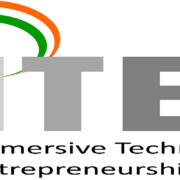As India has become increasingly digital since 2023 with large volumes of hiring in gig, BFSI, retail and technology, organizations have an ever-pressing need for faster and more verifiable background checks. With increasing cases of document forgery, identity tampering and resume embellishment, the search for smarter solutions to create trust at scale is front of the mind for many organizations.
As per OnGrid FY 2024–25 findings, over 3.6 lakh individuals out of 5 million plus checks had at least one failure verifying their credentials, which is indicative of discrepancies that have become endemic within the hiring ecosystem.
Authenticity of workforce and onboarding risks is now a core concern for both HR and business leaders. Background verification is no longer a backend procedural task, it is a fundamental strategic function and has the potential to affect an organization’s security, compliance and reputational risk profile. As organizations transition away from manual solutions to technology-based processes, AI systems are raising the bar by enabling significantly faster, smarter and much more efficient processes than ever before.
Here are the Top 5 Ways AI Is Transforming Background Verification in India
1. Instant, Automated Document Verification
Instead of manually reviewing IDs, certificates, and employment proofs, AI instantly extracts, validates, and cross-checks information. Platforms like OnGrid can deliver Instant BGV results in 1-5 minutes, helping companies reduce delays during onboarding. This automation also detects tampered files, mismatched entries, and manipulated images making verification far more accurate.
- Intelligent Risk Pattern Detection
AI identifies behavioral and document-based patterns that traditional checks often miss. It can flag inflated job titles, repeated address inconsistencies, unusual employment gaps, or multiple mismatch signals across a profile. With lakhs of candidates showing discrepancies each year, AI-powered pattern recognition helps organizations catch early red flags and make informed hiring decisions.
3. Deepfake and Synthetic Identity Protection
As digital deception becomes more sophisticated, AI is important in spotting deepfakes or manipulated photos and synthetic identities. Through the use of facial recognition, checks for liveness, and document forensics, AI provides a mechanism to ensure that the person it is verifying is real and present at that moment in time. This sophisticated layer of authentication decreases identity-based fraud substantially during onboarding.
- Continuous Verification Across the Employee Lifecycle
AI allows verification to go beyond just pre-joining checks. Companies today are adopting ongoing, lifecycle-based verification practices such as periodic re-screening, exit checks, moonlighting alerts, and role-based validation. This helps organizations maintain consistent trust and compliance across an employee’s journey, rather than relying on a one-time background check
5. Scalable Verification for High-Volume Hiring
Industries hiring at scale such as gig platforms, logistics, retail, and customer support, benefit significantly from AI-led automation. OnGrid’s API-driven workflows enable thousands of checks to be completed smoothly, cutting onboarding time by up to 60%. By reducing manual dependency, AI ensures that companies maintain accuracy without slowing down their hiring pipelines.
AI – enabled verification marks a boost in India’s hiring ecosystem. As organizations prefer speed, accuracy, and trust, platforms like OnGrid are leading the transformation helping employers make confident decisions and build a reliable workforce.





